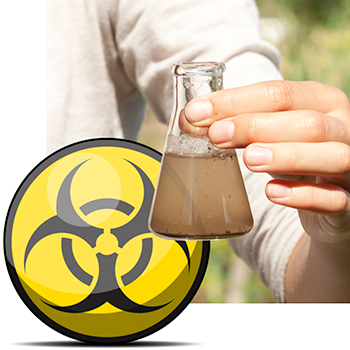
The McCook Field Neighborhood in Dayton, Ohio has been declared by the Environmental Protection Agency (EPA) to be one of the worst hazardous waste sites in the nation. On a recent visit, one resident expressed her concerns to me about the contamination.
“We used to live in a part of California where there was a lot of danger with drugs and gang violence. We moved to Dayton to try to raise our family in a safer environment,” she said. “We saw how calm and quiet the neighborhood was, how hardworking the neighbors were, and we thought this would be a great place to raise the kids. But then we came to find out that it is just as dangerous here. The danger is just different. You can’t see it, but it’s here just the same. Something must be done.”
We can’t agree more. Behr and Aramark need to step up and do the right thing: clean this community, reimburse the residents for the economic harm done to their homes, and monitor the residents for medical problems that are likely to occur in the future. Corporate integrity demands no less.
The neighborhood’s groundwater has been contaminated by a toxic groundwater plume which originated at both the Behr Dayton Thermal Facility and the Aramark Facility and then spread underground, throughout much of this area of North Dayton. The toxic plume contains volatile organic compounds (“VOCs”), including trichloroethylene (“TCE”). The medical literature shows that exposure to TCE can cause cancer, impaired fetal development in pregnant women, nerve damage, kidney damage, liver damage, and even death.
Once TCE is in groundwater beneath a residence or other building, it vaporizes and rises up through the soil and into the air above ground. The air inside buildings becomes too dangerous to breathe. The EPA conducted air monitoring of homes and business in the McCook Field Neighborhood and found extremely dangerous levels of TCE in the indoor air. The contamination has led to the closure of a local elementary school, and the Ohio Department of Health has reported that a bona fide cancer cluster exists across the neighborhood. To try to slow down the creeping contamination, Behr was forced to install emergency vapor abatement systems at hundreds of properties. But these low-tech pumps are usually ineffective and hardly permanent solutions.
Our firm has filed a class action lawsuit on behalf of the citizens of this neighborhood. We are asking Behr and Aramark to take responsibility for environmental cleanup, medical screening, and financial relief for neighborhood residents. Progress through the federal court takes time, but we are optimistic that we can make a difference for this embattled neighborhood.
In the meantime, we call on Behr and Aramark – and indeed corporate polluters everywhere – to understand and take responsibility for the devastation caused to families when their homes are contaminated with carcinogens. Behr and Aramark know that this ravaged community is made up of homes that now have little or no value. Lifelong dreams and investments are now gone. Families are worried sick about what this means for their health.
